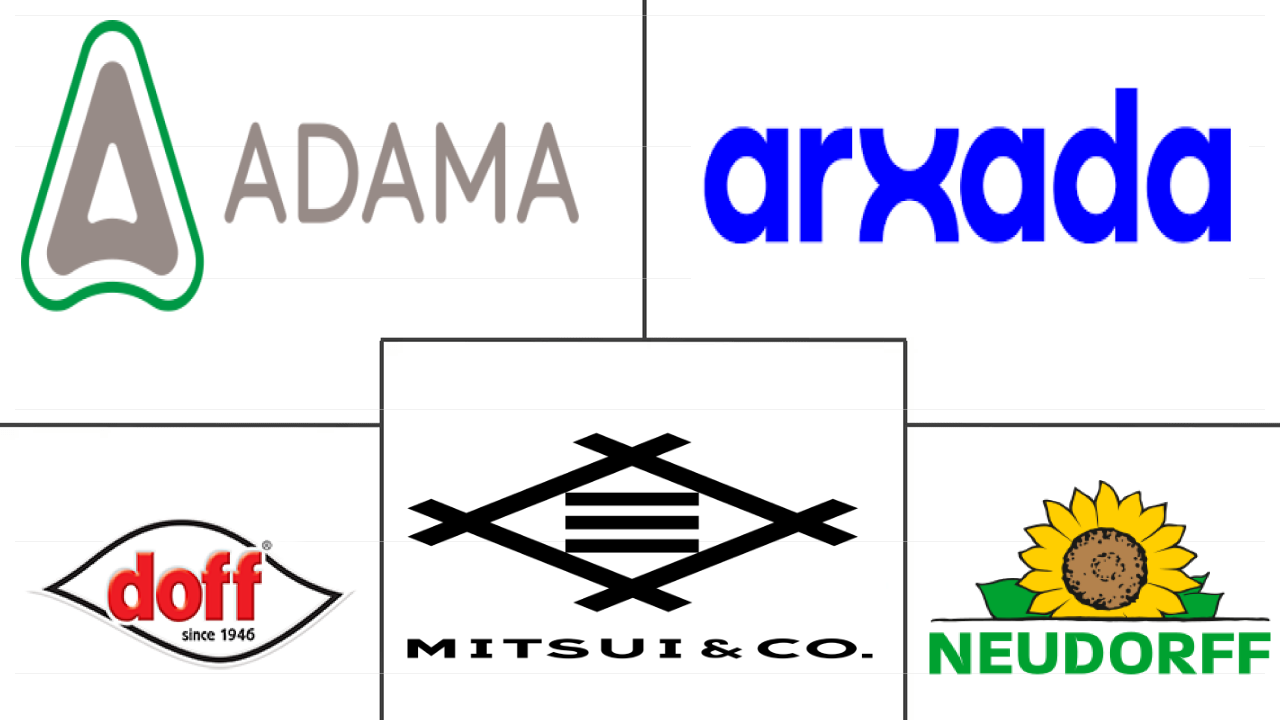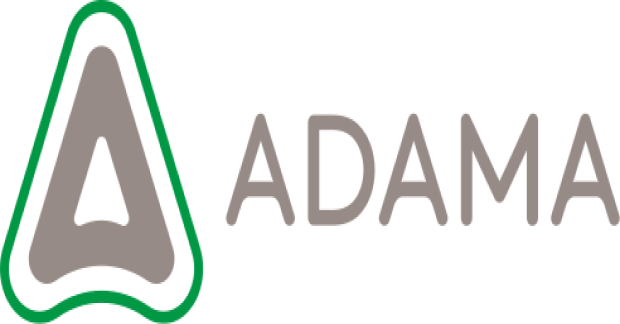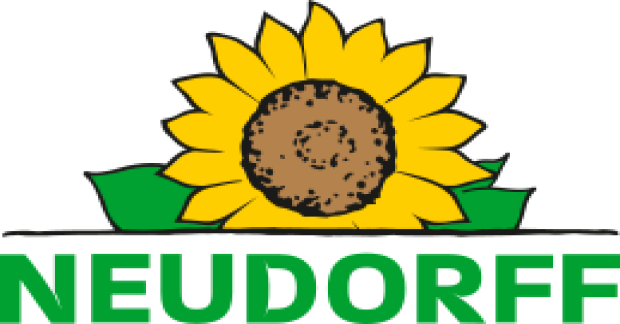Market Size of europe molluscicide Industry
| Icons | Lable | Value |
|---|---|---|
|
|
Study Period | 2017 - 2029 |
|
|
Market Size (2024) | USD 130.3 Million |
|
|
Market Size (2029) | USD 169.4 Million |
|
|
Largest Share by Application Mode | Foliar |
|
|
CAGR (2024 - 2029) | 5.40 % |
|
|
Largest Share by Country | France |
|
|
Market Concentration | Low |
Major Players |
||

|
||
|
*Disclaimer: Major Players sorted in no particular order |
Europe Molluscicide Market Analysis
The Europe Molluscicide Market size is estimated at 130.3 million USD in 2024, and is expected to reach 169.4 million USD by 2029, growing at a CAGR of 5.40% during the forecast period (2024-2029).
130.3 Million
Market Size in 2024 (USD)
169.4 Million
Market Size in 2029 (USD)
5.58 %
CAGR (2017-2023)
5.40 %
CAGR (2024-2029)
Largest Segment by Application Mode
54.87 %
value share, Foliar, 2023
Foliar application is the most common and traditional way of applying molluscicides, which will effectively control the slugs and snails in various crops like cereals and oilseeds.
Largest Segment by Crop Type
59.44 %
value share, Grains & Cereals, 2023
The rise in crop infestations by gray slugs in grains and cereals crops and the need to protect them for high productivity increased the market for molluscicides in these crops.
Largest Segment By Country
14.73 %
value share, France, 2023
Increased crop losses by the gray slugs in major crops in the country and their extending cultivation areas increased molluscicide usage and helped the market grow.
Leading Market Player 1
4.03 %
market share, ADAMA Agricultural Solutions Ltd., 2022

ADAMA invests more in R&D activities to expand its product portfolio by adding new products like ferric phosphate-based molluscicide, resulting in the growth of company strength.
Leading Market Player 2
1.71 %
market share, W. Neudorff GmbH KG, 2022

Neudroff concentrates majorly on offering effective molluscicide products for various crops like vegetables, fruits, and ornamentals, which helps in the growth of the company.
The foliar application dominates the market
- Europe has diverse climatic conditions and soil types, which allow for the cultivation of a wide range of crops. The main crop is wheat, followed by barley and rye. However, there is a significant risk to crop production due to the infestations of mollusks, such as snails and slugs, that result in reduced yields, financial losses for farmers, and concerns about food security.
- Various application methods are adopted in the region to manage pest and disease attacks. Foliar application occupied the highest share of 52.5% by value in 2022. It has been observed that foliar spraying of metaldehyde and thiodicarb is suitable as one of the components of integrated pest management of snails and has been quite effective in the region.
- Additionally, the soil treatment method occupied the second-highest share of 32.2% by value in 2022. It has been observed that molluscicide application on soil appeared to be the easiest, safest, and most efficient way of controlling pests. If soil is treated with a systemic molluscicide, it kills mollusks that live in the soil.
- Nevertheless, there are several drawbacks to the health of consumers, workers, and the environment from using foliar pesticides. Chemigation of pesticides can be fairly utilized, making it cost-effective and removing several drawbacks common to foliar molluscicide applications. Chemigation occupied a share of 12.9% by value in 2022.
- Owing to the increase in research and innovation, which are aimed to bring out the safest and most effective method of application, along with the increased awareness among the farmers regarding the effectiveness of the proper application of molluscicides, the market is anticipated to register a CAGR of 5.3% during the forecast period (2023-2029).
Increasing snail population and the growing damage to crops are boosting the usage of molluscicides
- Slugs are a class of mollusks that are among the most harmful to soil due to their ability to inflict extensive damage on field crops, particularly during wet conditions of the spring and fall months. The grey slug is one of the major species of slugs, which is responsible for the majority of crop damage in Europe. France accounted for a major share of 15.4% in 2022 in terms of the consumption of molluscicides in the region.
- Russia accounted for 14.3% of the total European molluscicides market in 2022. The cool, humid climates of Russia make the situation even worse as the number of snails may be as high as 200 slugs on every square yard of cultivated farm, with each one capable of producing 400 round white eggs annually. The higher reproduction rate makes it very difficult to control the snails.
- In Italy, snails feed on ripe and ripening fruit, young tree leaves, and even the bark of young trees, leading to significant economic losses in citrus orchards. Additionally, their presence can disrupt irrigation management by clogging sprinkler heads and irrigation systems, further exacerbating the challenges faced by farmers.
- Metaldehyde, niclosamide, and metal salts such as iron (III) phosphate, aluminum sulfate, and ferric sodium EDTA comprise commonly used molluscicides in the region and can be applied through different methods.
- Advancements are being made in developing more effective molluscicide formulations to enhance bait attractiveness, palatability, and stability to improve the targeting and efficacy of molluscicides against snails and slugs. These factors are anticipated to drive the market for molluscicides in European countries, with higher adoption by farmers.
Europe Molluscicide Industry Segmentation
Chemigation, Foliar, Fumigation, Soil Treatment are covered as segments by Application Mode. Commercial Crops, Fruits & Vegetables, Grains & Cereals, Pulses & Oilseeds, Turf & Ornamental are covered as segments by Crop Type. France, Germany, Italy, Netherlands, Russia, Spain, Ukraine, United Kingdom are covered as segments by Country.
- Europe has diverse climatic conditions and soil types, which allow for the cultivation of a wide range of crops. The main crop is wheat, followed by barley and rye. However, there is a significant risk to crop production due to the infestations of mollusks, such as snails and slugs, that result in reduced yields, financial losses for farmers, and concerns about food security.
- Various application methods are adopted in the region to manage pest and disease attacks. Foliar application occupied the highest share of 52.5% by value in 2022. It has been observed that foliar spraying of metaldehyde and thiodicarb is suitable as one of the components of integrated pest management of snails and has been quite effective in the region.
- Additionally, the soil treatment method occupied the second-highest share of 32.2% by value in 2022. It has been observed that molluscicide application on soil appeared to be the easiest, safest, and most efficient way of controlling pests. If soil is treated with a systemic molluscicide, it kills mollusks that live in the soil.
- Nevertheless, there are several drawbacks to the health of consumers, workers, and the environment from using foliar pesticides. Chemigation of pesticides can be fairly utilized, making it cost-effective and removing several drawbacks common to foliar molluscicide applications. Chemigation occupied a share of 12.9% by value in 2022.
- Owing to the increase in research and innovation, which are aimed to bring out the safest and most effective method of application, along with the increased awareness among the farmers regarding the effectiveness of the proper application of molluscicides, the market is anticipated to register a CAGR of 5.3% during the forecast period (2023-2029).
| Application Mode | |
| Chemigation | |
| Foliar | |
| Fumigation | |
| Soil Treatment |
| Crop Type | |
| Commercial Crops | |
| Fruits & Vegetables | |
| Grains & Cereals | |
| Pulses & Oilseeds | |
| Turf & Ornamental |
| Country | |
| France | |
| Germany | |
| Italy | |
| Netherlands | |
| Russia | |
| Spain | |
| Ukraine | |
| United Kingdom | |
| Rest of Europe |
Europe Molluscicide Market Size Summary
The Europe Molluscicide Market is poised for significant growth, driven by the diverse climatic conditions and soil types across the region that support a wide range of crop cultivation, primarily wheat, barley, and rye. However, the threat posed by mollusk infestations, such as snails and slugs, presents substantial challenges, including reduced crop yields and financial losses for farmers. The market is characterized by various application methods, with foliar application being the most prevalent, followed by soil treatment and chemigation. These methods are part of integrated pest management strategies aimed at mitigating the impact of mollusks on agriculture. The market's expansion is further supported by ongoing research and innovation focused on developing safer and more effective molluscicide formulations, which are expected to enhance adoption among farmers.
The market landscape is fragmented, with key players like ADAMA Agricultural Solutions Ltd., Arxada, Doff Portland Ltd, Mitsui & Co. Ltd (Certis Belchim), and W. Neudorff GmbH KG holding a modest share. The use of molluscicides is critical in managing pests that threaten crop production, particularly in countries like France, Russia, and Italy, where mollusk populations are notably high. The introduction of advanced formulations and application techniques is anticipated to drive market growth, as these innovations improve the targeting and efficacy of molluscicides. The market's trajectory is also influenced by the need for sustainable agricultural practices, with environmentally friendly options like ferric phosphate gaining traction. As European farmers continue to face challenges from mollusk pests, the reliance on synthetic chemicals and innovative solutions is expected to shape the future of the molluscicide market in the region.
Europe Molluscicide Market Size - Table of Contents
-
1. MARKET SEGMENTATION (includes market size in Value in USD and Volume, Forecasts up to 2029 and analysis of growth prospects)
-
1.1 Application Mode
-
1.1.1 Chemigation
-
1.1.2 Foliar
-
1.1.3 Fumigation
-
1.1.4 Soil Treatment
-
-
1.2 Crop Type
-
1.2.1 Commercial Crops
-
1.2.2 Fruits & Vegetables
-
1.2.3 Grains & Cereals
-
1.2.4 Pulses & Oilseeds
-
1.2.5 Turf & Ornamental
-
-
1.3 Country
-
1.3.1 France
-
1.3.2 Germany
-
1.3.3 Italy
-
1.3.4 Netherlands
-
1.3.5 Russia
-
1.3.6 Spain
-
1.3.7 Ukraine
-
1.3.8 United Kingdom
-
1.3.9 Rest of Europe
-
-
Europe Molluscicide Market Size FAQs
How big is the Europe Molluscicide Market?
The Europe Molluscicide Market size is expected to reach USD 130.27 million in 2024 and grow at a CAGR of 5.40% to reach USD 169.44 million by 2029.
What is the current Europe Molluscicide Market size?
In 2024, the Europe Molluscicide Market size is expected to reach USD 130.27 million.

